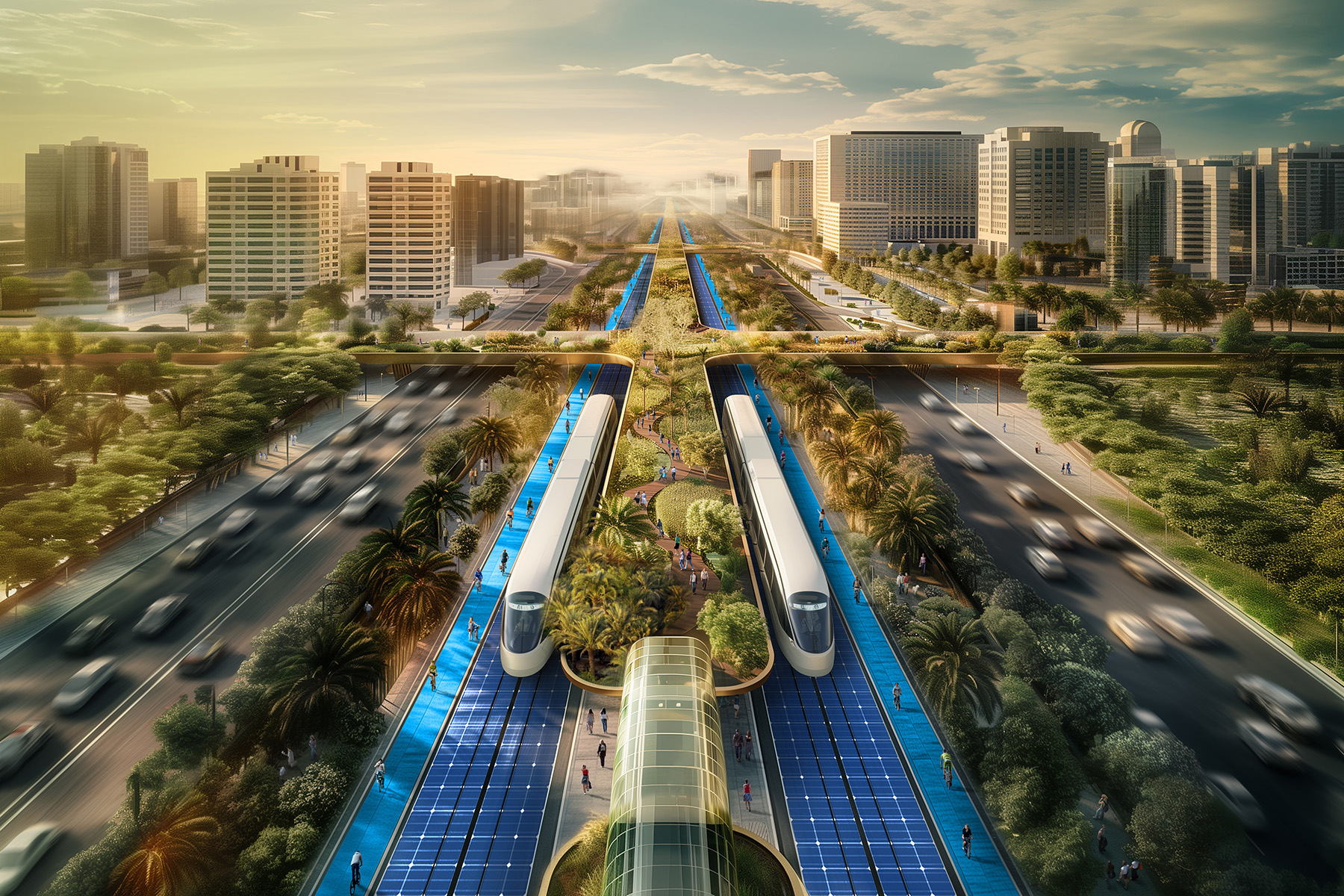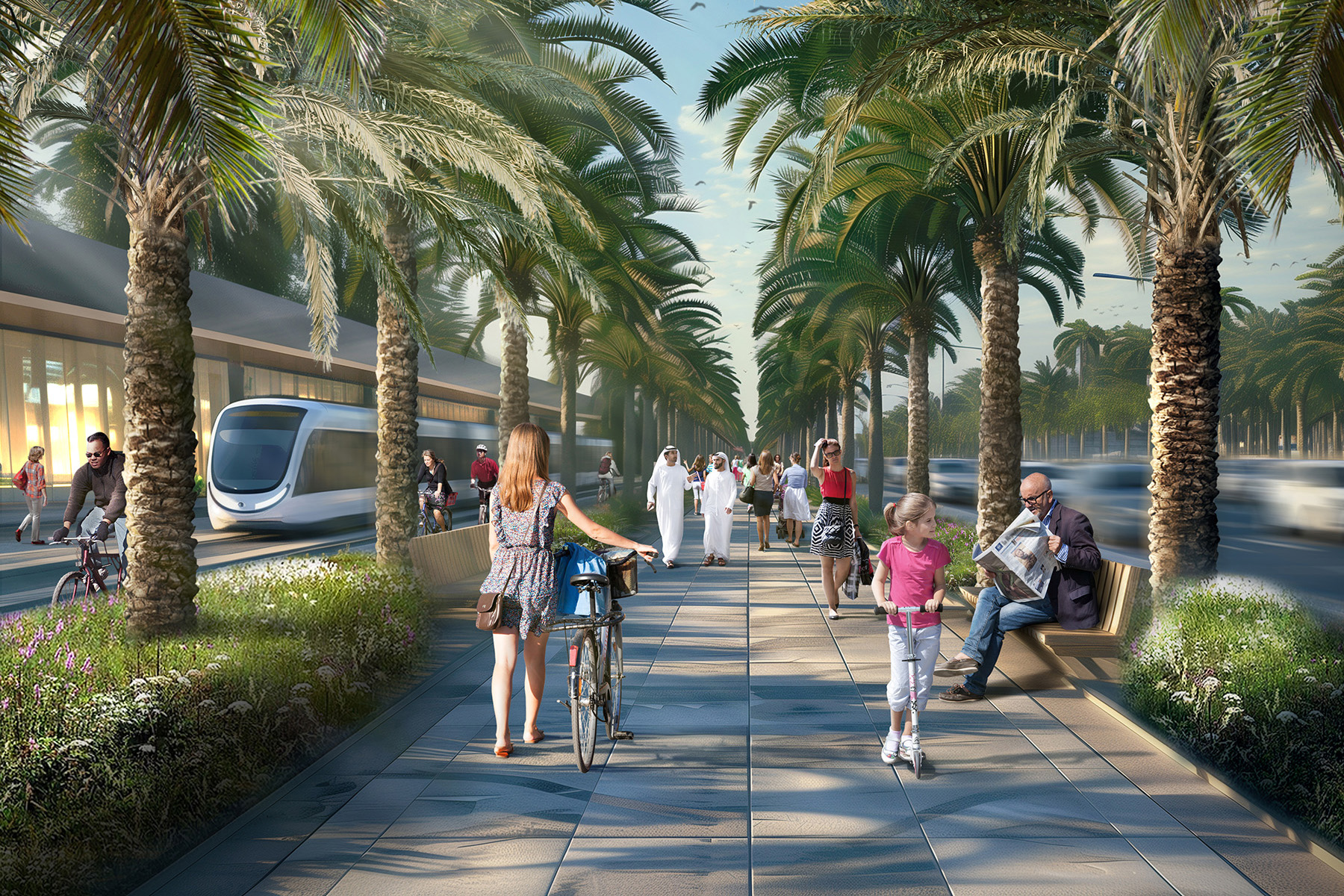
By Kayt Sukel
The famed city of Dubai has long been fighting “desertification,” looking for novel ways to sustain a population of nearly 3.8 million people despite being in one of the world’s harshest climates. With the United Arab Emirates’ ambitious promise to reach net zero emissions by 2050 — and invest billions of dollars in renewable energy — this desert landscape is fertile ground for green projects, especially with the city’s population expected to double within the next two decades.
One such project is the Dubai Green Spine, a 64 km urban corridor that promises to roll urban farms and gardens, more than a million new trees, and a slew of renewable energy opportunities into one sustainable community along the Sheikh Mohammed Bin Zayed Road (also known as the E311). The goal is to create a planned piece of urban infrastructure that will “cultivate a greener, more livable city,” according to the designer, URB, which is an experienced developer of net zero infrastructure projects.
The E311 runs northeasterly from Abu Dhabi toward Ras al-Khaimah, cutting across the city of Dubai. URB believes it can transform this major thoroughfare into a multifunctional space, creating a continuous linear park that enhances the city’s beauty, while also improving air quality and reducing the effects of the potent combination of urban and desert heat.
Baharash Bagherian, chief executive officer of URB, says the project, which will provide walking, biking, and motorized cart paths, will not only offer improved transit options for residents, but it will also enhance their quality of life. “We’re not just improving mobility; we’re creating an environment where people (will) thrive,” he says. “This forward-thinking approach is the future of urban planning, focusing on the well-being and connectivity of all residents.”

By incorporating cutting-edge technology with smart urban planning, the Dubai Green Spine will offer traffic management systems that will operate in real time, thereby easing congestion on the E311, one of the UAE’s busiest highways. Another feature of the Dubai Green Spine will be energy-efficient buildings, designed to meet the standards of the Dubai 2040 Urban Master Plan. The goal is to prepare for the continued growth of the city, as well as the UAE’s economic priorities, but to do so in a sustainable manner.
But one of the project’s greatest goals, Bagherian posits, is to “(knit) together diverse neighborhoods” in ways that will engage communities and support greater social cohesion. He envisions a series of commercial and cultural hubs along the spine that will bring people together for a variety of educational, recreational, and cultural programming.
Kayt Sukel is a science and technology writer based outside Houston.
This article first appeared in the January/February 2025 issue of Civil Engineering as “A Green Approach to Desert Mobility.”



